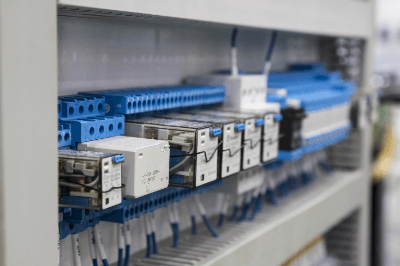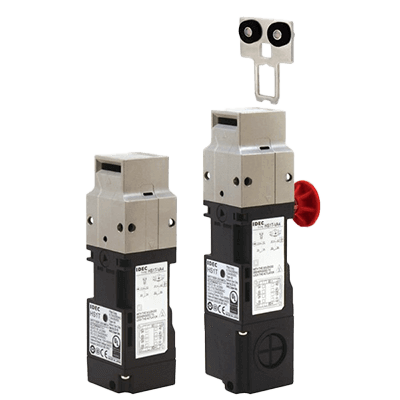What Are Electronic Forms?
Electronic forms are scanned and digitized forms created in Word or Excel on a PC or paper forms, and are a legally valid method of document storage.
Eliminating paper forms not only reduces the space required for storage but also reduces the use of paper as an environmental resource and can cut costs down to printing costs and stamp fees. For businesses, electronic forms can also improve operational efficiency.
By shifting from paper to electronic forms, the risk of data loss due to natural disasters and other causes is also increased.
Uses of Electronic Forms
Electronic forms are used to replace paper-based ledgers electronically, that record transactions in a company and vouchers that objectively certify those transactions.
Many companies use electronic ledgers mainly for accounting work, and the following are examples of their use
1. Report Creation and Management
Field work reports and sales reports are input and sent from smartphones, tablets, and other terminals to improve efficiency and share information.
2. Management of Order Forms
It is not unusual for a retailer to receive several hundred orders a day via fax; by connecting faxes to an electronic form system and storing them electronically, storage space can be reduced and retrieval made easier.
3. Approval and Management of Approval Documents
In addition to digitizing the creation of approval requests, the approval cycle is also placed in the workflow to allow the progress to be monitored. In addition, information can be easily shared within the company.
Principle of Electronic Forms
Electronic forms are digitalized versions of books of account and vouchers that were previously created on paper. For example, they are created and saved in Excel, Word, and PDF formats.
Electronic forms also include scanned paper documents converted to PDF or other image data. Time stamps are used to protect against tampering and to prove when the data existed.
Electronic Forms that are time-stamped at a specific time can prove that they have not been modified since then.
How to Select an Electronic Form System
When choosing an electronic form system, the following points should be considered:
1. Clarification of the Scope of Work
Electronic Forms systems have functions such as creation, distribution, storage, and management, but they do not have all of these functions. It is important to select a system that has the necessary functions according to the scope of your business and your needs.
2. Consideration of the Burden on Users
When implementing an electronic form system, it is desirable to reduce the burden on users (both internal and external) as much as possible. For example, an interface with good operability and visibility, and an output method that is compatible with a variety of terminals and formats, are examples of such features.
3. Security Governance Perspective
Since electronic form systems often handle personal and confidential information, security measures are essential. In addition to basic functions such as data encryption and access restrictions, it is necessary to select a system that takes legal compliance and internal control into consideration.
4. Level of Support
Electronic form systems may require maintenance and troubleshooting even after installation. Therefore, it is important to check the support system and service level.
Other Information on Electronic Forms
1. Main Functions of Electronic Forms System
Form Creation Function
This function is used to design the layout and items of ledger sheets. You can freely create forms using design tools and templates.
Report Distribution Function
This function is used to distribute form data to other parties. Forms can be attached to an e-mail as a file or downloaded with a URL.
Forms Management Function
This function centrally manages form data. You can search by keywords and conditions, and check the browsing history and change history.
Security Function
Security functions are to prevent falsification or leakage of form data. Mechanisms such as user authentication, locks, and time stamps are available.
2. What is the Electronic Bookkeeping Act?
The Electronic Bookkeeping Act is a law enacted in July 1998 regarding the electronic storage of Electronic Forms. Previously, national tax-related documents had to be stored in paper form.
However, the Electronic Bookkeeping Act allows documents to be stored in electronic form. Furthermore, the 2015 amendment eliminates the need for electronic signatures for electronic books, and contracts and receipts of 30,000 yen or more are now covered by the law.
Although prior application to the tax office was required in order to use the Electronic Bookkeeping Act, prior application is no longer required as of January 1, 2022. In addition, the output and storage on paper of data exchanged through electronic transactions is no longer permitted.
There are many other documents that are subject to the Electronic Bookkeeping Act, but please note that documents that are not subject to the Act cannot be stored electronically.
- Accounting documents such as journal ledgers, accounts receivable ledgers, purchase ledgers, accounts payable ledgers, and fixed asset ledgers
- Financial documents such as inventory sheets, balance sheets, profit and loss statements, etc.
- Documents such as contracts, receipts, bank books, quotations, invoices, etc.
 An FPC is a flexible printed circuit board. It is characterized by its paper-thinness and softness. Since it is lighter, smaller, and more economical than ordinary substrates, it has come to be widely used in recent years.
An FPC is a flexible printed circuit board. It is characterized by its paper-thinness and softness. Since it is lighter, smaller, and more economical than ordinary substrates, it has come to be widely used in recent years. A terminal relay is an input/output signal processing device that integrates multiple relays and
A terminal relay is an input/output signal processing device that integrates multiple relays and  A tactile switch is a momentary-type switch that is energized by a click when a person presses it.
A tactile switch is a momentary-type switch that is energized by a click when a person presses it.